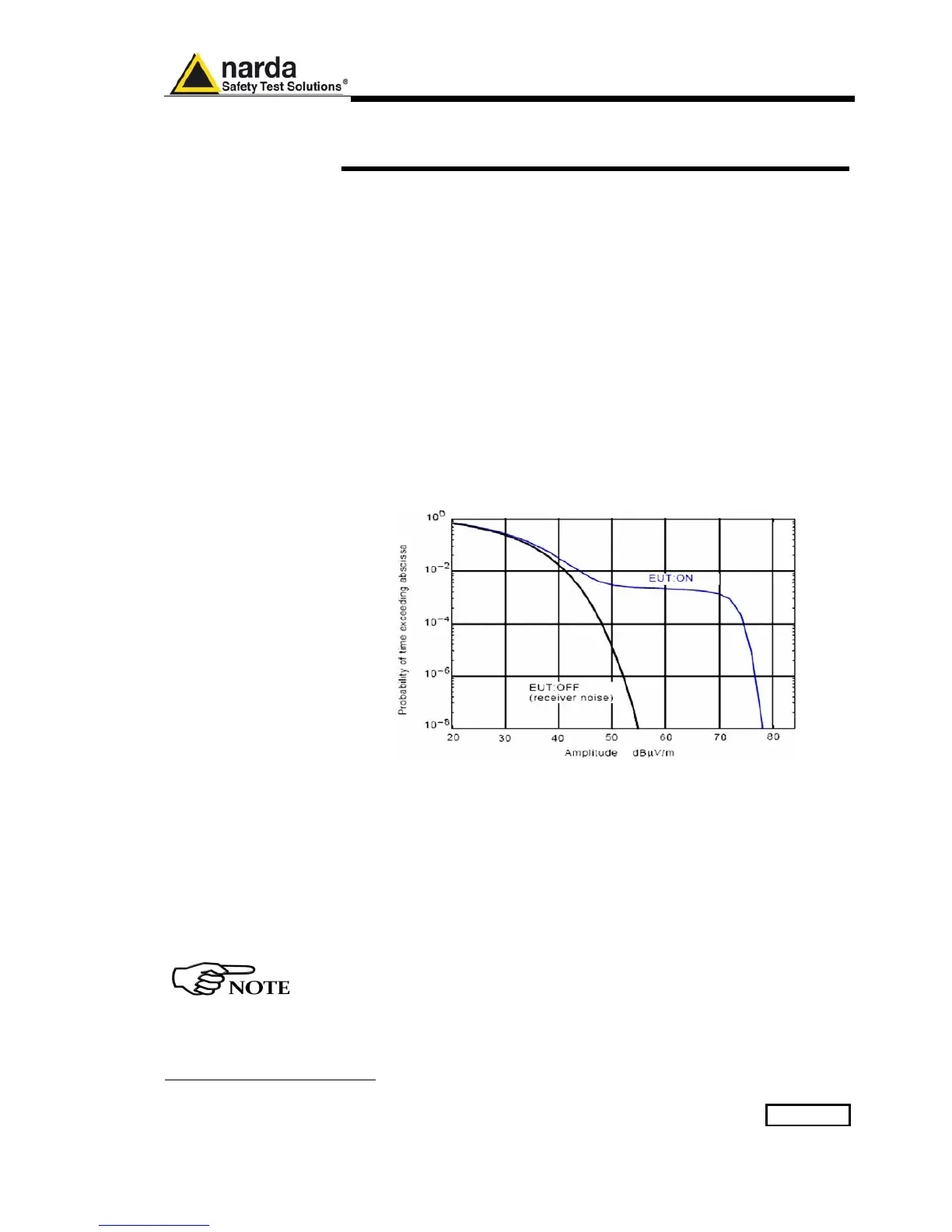APD Mode Operating Instructions 13-1
13 – APD Mode Operating Instructions
(Amplitude Probability Distribution)
13.1 Introduction
EM disturbances have become much more complicated since introduction of
digital radio communication system over 1 GHz, in a way that radiated
emission noise from EUTs has become broadband.
An APD-measuring function has been introduced in the CISPR 16-1-1
Standard requirements for EMC Measuring Equipments, in order to detect
both “broadband emissions” generated by repetitive pulses and “pulse-
modulated narrowband emissions” at frequencies over 1 GHz.
The signal amplitude statistics are described in radio engineering as follows:
Amplitude Probability Distribution definition: APD (E
k
) = [∑ D
i
(E
k
)] / T
t
Where E
k
is the envelope of the noise, D
i
is the duration of each relevant
peak and T
t
is the total measurement time.
APD statistics are needed to accurately predict non-gaussian noise effects
coming from sources like lightning systems, electrical or electronic devices
where average noise power detection cannot predict the performance of the
EUT.
In the example above, taken from CISPR 16-1-1 Amend. 1, a typical APD
representation is provided.
In such example, in particular, two different measurements conditions are
shown, with and without an EUT operating at a specific distance from the
measuring antenna, where the probability of the signal amplitude to be in the
noise level of 20 dBµv/m is almost equal to “1” (i.e. always true) and is
identical with or without contribution from EUT; such amplitude appears
never exceeding the max value of 80 dBµv/m instead (probability < 10
-8
)
when the EUT is ON, while there is almost the same, even if low, probability
(10
-3
) that such a value remains between 50 and 70 dBµv/m.
All the following is indifferently referred to the PMM 9010 or the PMM
9010/03P/30P/60P.
Document 9010EN-81037-2.57 - © NARDA 2018

